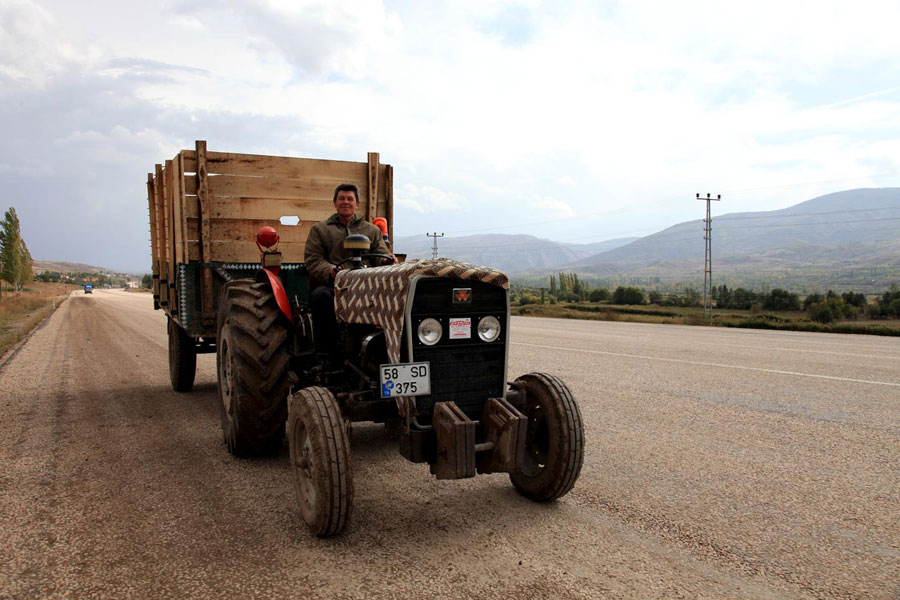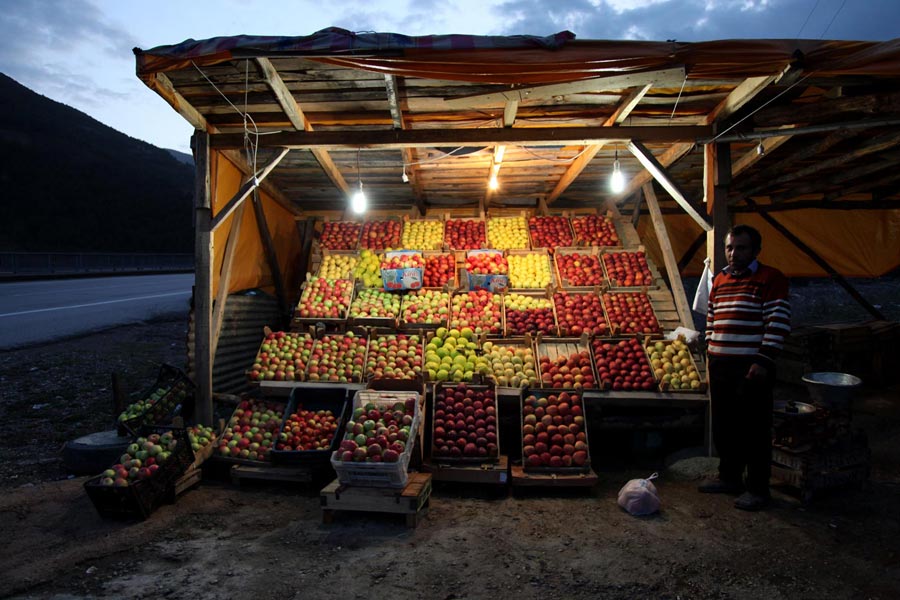21/10
Geology rocks, but we dig agriculture
We expected the huge mountain ranges and the wide open spaces in this part of Turkey, but what we didn’t reckon on was just how much agriculture would play a part here. This is a much greener and less arid part of turkey than further east, and it is a hive of farming industry. The hard shoulder of the newer stretches of road are given up to cheerful tractor drivers, ferrying about fantastic juicy fruit and vibrantly coloured vegetables.
Whilst much of the work is done by less mechanised methods (and it does look like hard graft), farming here is on an impressively large scale. Vast piles of produce line the sides of the roads, and as you travel down the road you get the impression each area has its own specialism. First it’s swedes, then it’s giant cabbages, followed by an abundance of apples.
In fact, since 1980 Turkey has been self sufficient in food production – only one of seven countries in the world to achieve this. Despite the agricultural industry slowly increasing since the 80s, it has been declining proportionate to the overall economy. The government are encouraging agriculture and investment in this part of the world by issuing loans for agriculture with negative interest. That, along with the ambitious Southeastern Anatolian Project (a series of 22 hydro-electric dams) will hopefully ensure a bright future for the farmers in this area. This is one of the conundrums of living on the fault line. A seismic landscape is mountainous, but where you have mountains you also have fertile lake beds, valleys and an abundance of water. And hence the benefits of fault line living can outweigh the disadvantages.


 Share
Share


